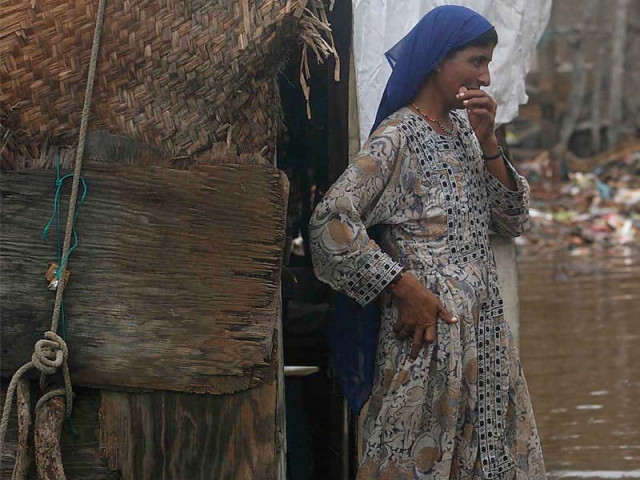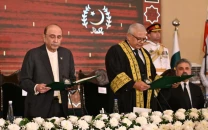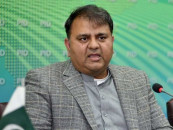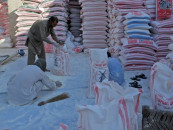Post-flood analysis: 87% of water sources unfit for drinking, says watchdog group
Bureaucratic holdups and corruption have halted projects

The volunteer-based organisation published its Water, Sanitation and Hygiene (WASH) report, concentrating on the end of the emergency phase in December 2011 up until January 2012, studying eight badly hit flood-affected districts: Mirpurkhas, Tando Allahyar, Tando Mohammad Khan, Badin, Sanghar, Shaheed Benazirabad, Umerkot and Tharparkar.
Speaking to the media at the Karachi Press Club on Wednesday, PACF member Ramzan Memon said, “Thousands of people’s lives are still at risk from the lack of potable water and are at threat from a number of diseases.”
Over two million women and children in affected areas are at risk because there has been no response or intervention in the water and sanitation sector after they were initially settled in camps.
The PACF appealed for an early recovery framework for the restoration of the basic structure latrines, protection of water for drinking, sanitation, drains and waste management. The PACF estimates that one million people are using unprotected water sources and that there has been a ten per cent decrease in the number of people using water from protected sources and a five per cent decrease in ‘piped water sources’.
“Bureaucratic holdups and corruption have halted a lot of projects that were meant to have been undertaken under the advice of NGOs,” said Memon, but failed to provide any evidence of corruption.
PACF member Saleem Abbasi claimed that 168 projects which were supposed to be endorsed weren’t. Water purification systems were implemented in 18 villages in a “model village” scheme but have not gone beyond that.
The Provincial Disaster Management Authority and the National Disaster Management Authority were not spared either. “They have been doing nothing but planning for the last two months,” said Memon. “They haven’t and can’t do anything because of the bureaucracy.” He says that they have not been able to meet 54% of the targets they had set out for themselves.
Diseases such as diarrhea, cholera and skin infections have been continuing because of the lack of clean water and according to the report, during the relief period 729 water borne disease alerts, 202 vector borne diseases and 63 outbreaks of water-related diseases were reported.
The PACF says over 600,000 people are still living without latrines and people who have been able to return to their homes, have been unable to rebuild them and still don’t have access to clean sources of water. Abbasi estimated over 50,000 people are still living in camps and on the roadside.
The report claims that 42% of protected water sources are not yet functional and 49% of piped water and 58% of tanker sources were not working either.
The PACF uses many external sources to buttress its reports and it admitted to not having the ground staff available to carry out more comprehensive research.
The PACF says that at the moment the government has marked only about half a billion rupees for water and sanitation but that Rs5 billion are actually needed to meet the Millennium Development Goals, improve the lives of flood victims and help prepare for the next monsoon season.
Published in The Express Tribune, February 2nd, 2012.



















COMMENTS
Comments are moderated and generally will be posted if they are on-topic and not abusive.
For more information, please see our Comments FAQ